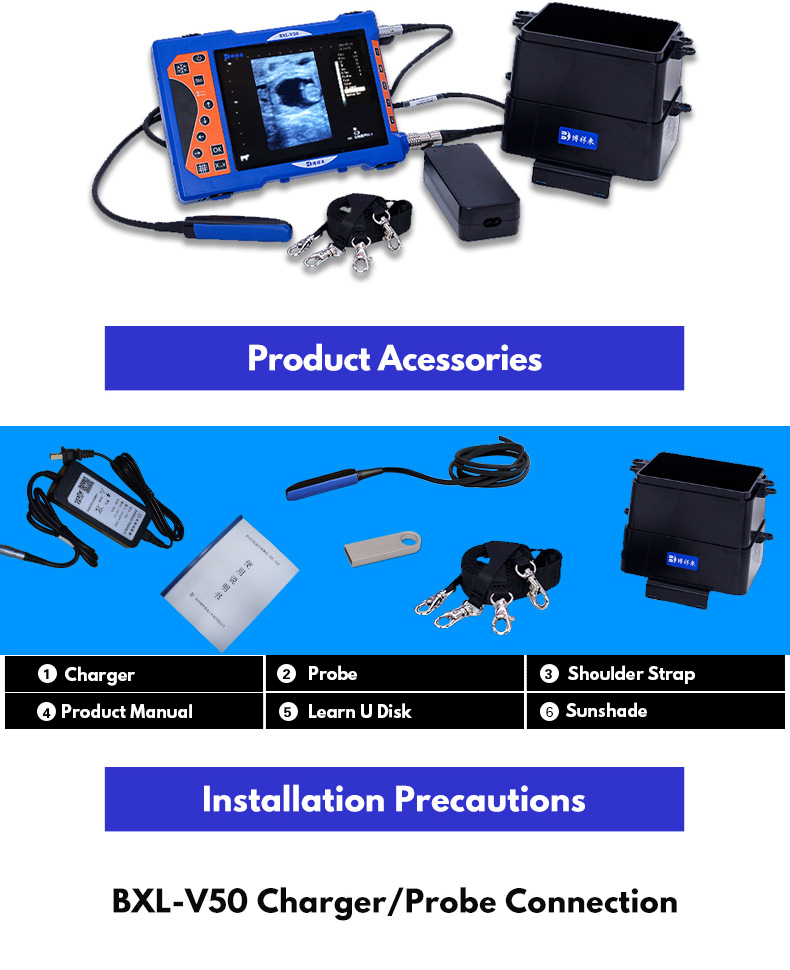Selecting the right ultrasound instrument is crucial for providing high-quality veterinary care. BXL ultrasonic instruments have gained recognition for their reliability, advanced imaging capabilities, and user-friendly design. This article outlines the key factors to consider when choosing a BXL ultrasound instrument for veterinary use, ensuring that your investment meets your clinical needs and enhances diagnostic efficiency.

Understanding BXL Ultrasonic Instruments
BXL ultrasonic instruments are designed to offer high-resolution imaging by employing high-frequency sound waves. These devices are integral to modern veterinary diagnostics, providing clear, real-time images that allow for non-invasive examinations. Their versatility makes them suitable for a wide range of veterinary applications—from evaluating internal organs to guiding interventional procedures.
Key Features to Consider
1. Clinical Application Requirements
- Species-Specific Needs: Determine whether your practice primarily treats small animals, large animals, or both. BXL instruments often come with specialized settings that cater to different anatomical and physiological requirements.
- Imaging Applications: Identify the primary use of the instrument. Whether you need to assess soft tissues, reproductive systems, or musculoskeletal structures, ensure that the device supports the necessary imaging modes and features.
2. Technical Specifications
- Transducer Options: Look for instruments that offer multiple transducer options with varying frequencies. A broader range of frequencies enhances versatility by accommodating both superficial and deep tissue imaging.
- Image Quality: Evaluate the resolution and clarity of the images. High-definition imaging is vital for accurately diagnosing conditions and planning treatments.
- Doppler Capabilities: For assessing blood flow and vascular conditions, Doppler ultrasound is essential. Ensure that the BXL instrument provides reliable Doppler functionality.
3. Ease of Use and Portability
- User-Friendly Interface: An intuitive touchscreen interface and simplified controls can significantly reduce the learning curve and improve daily operation.
- Portability: Consider the weight and design of the device. A portable instrument is ideal for clinics that require mobility or in-field diagnostic work.
- Durability: Veterinary environments can be demanding. Look for rugged construction and design features that ensure the instrument withstands frequent use.
4. After-Sales Support and Warranty
- Customer Support: Reliable technical support and comprehensive training resources are key to maximizing your instrument’s potential.
- Warranty and Service: A strong warranty and service plan protect your investment and reduce downtime in case of technical issues.
5. Cost-Effectiveness
- Budget Considerations: Weigh the initial purchase price against long-term maintenance and operational costs. A cost-effective BXL ultrasonic instrument should offer a balance between affordability and advanced diagnostic capabilities.
- Return on Investment: Consider how enhanced diagnostic accuracy and efficiency can improve patient outcomes and operational workflows in your practice.
tags: Ultrasound InstrumentUltrasound Instrument for Veterinary


